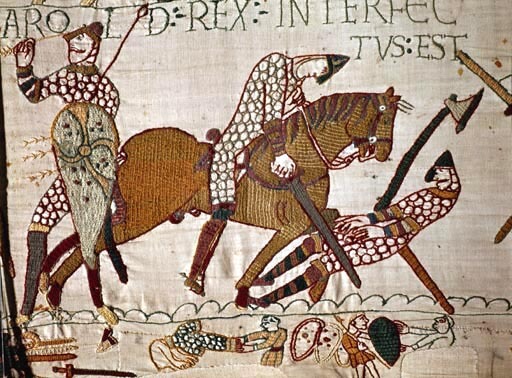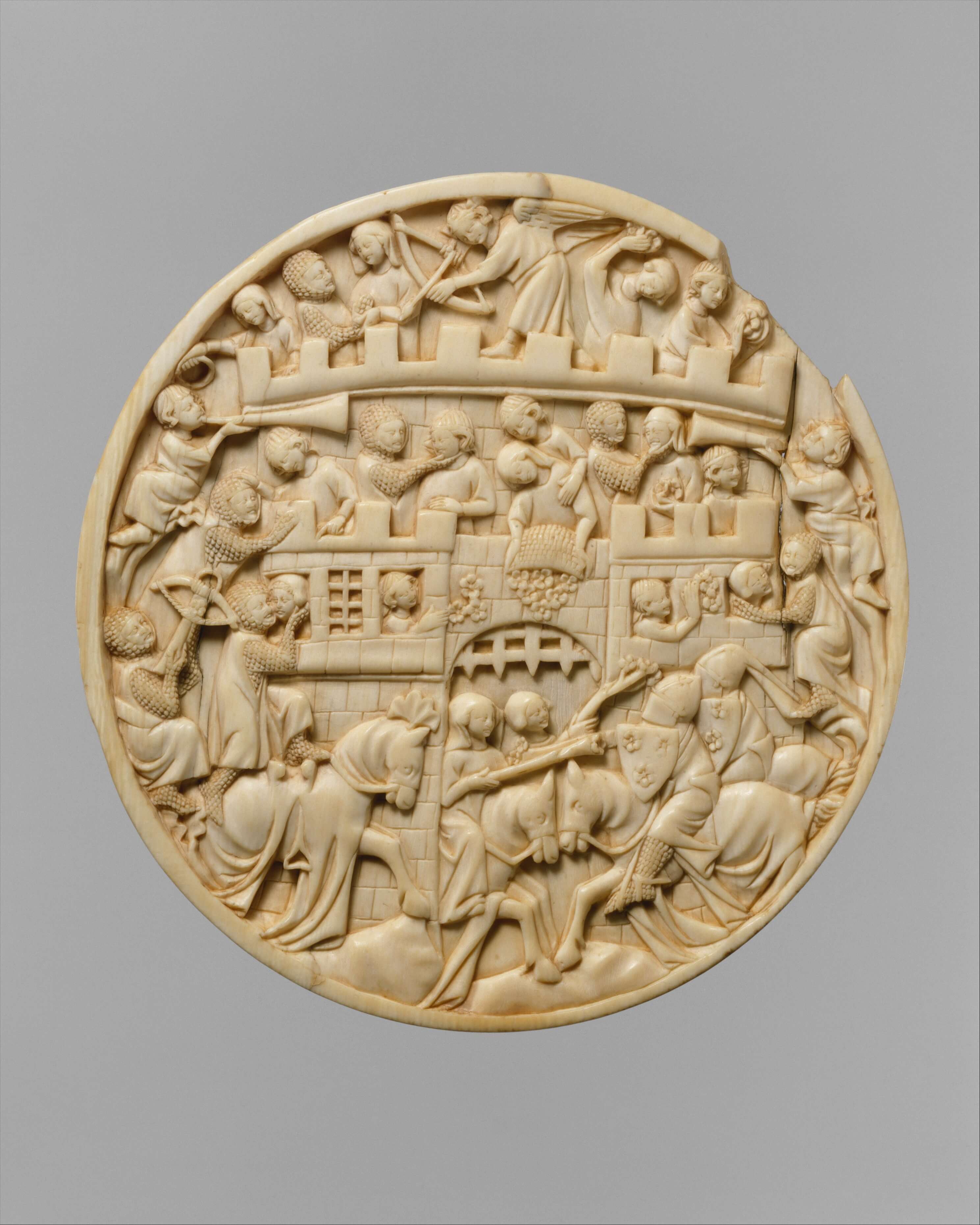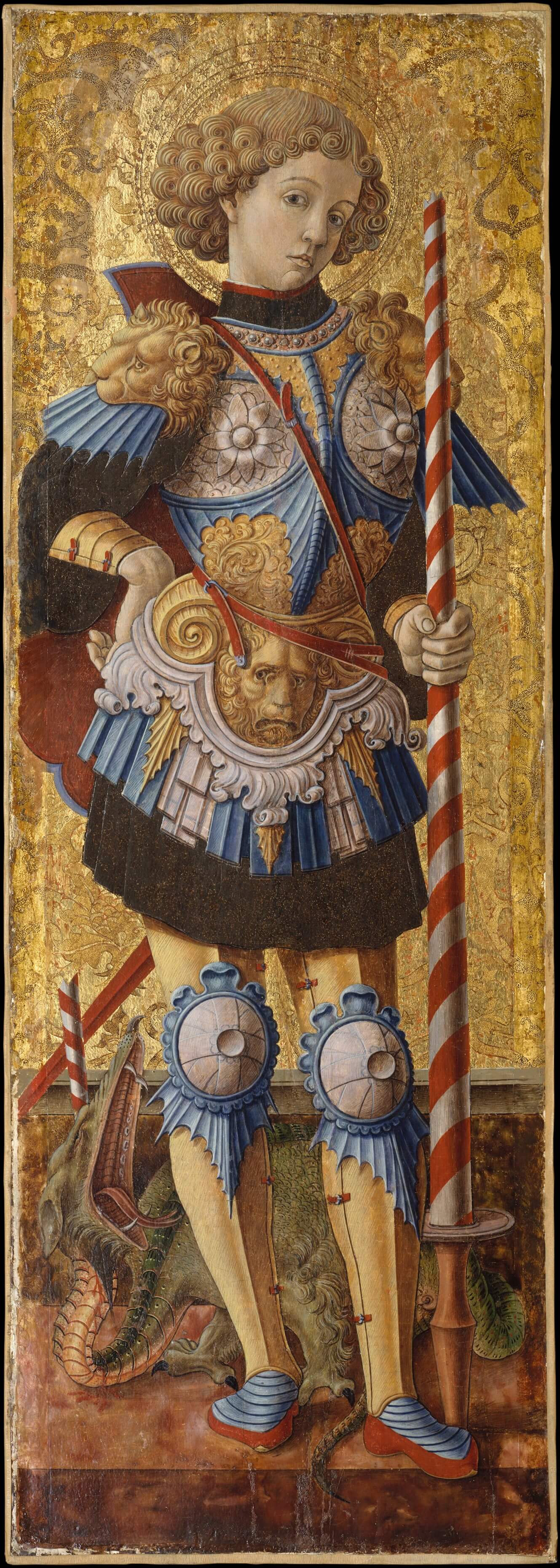Posts like this happen when, in unusual times like these, I have free time to binge medieval-inspired shows on Netflix. Here is a brief selection of medieval knights in artwork from the 11th to 19th centuries, though I could easily have chosen dozens of other works. Beyond my general medieval-art obsession, which is well-documented on this website, I’m also interested in how images of knights have changed over time. Recently, the field of Medieval Studies has started paying attention to how the Middle Ages have been understood, depicted, and appropriated in subsequent centuries through the present day. The findings are really interesting. I won’t go into this idea too deeply in this light post, but you might want to keep it in mind as you browse my selection.
Understand and appreciate art
Sign up for email updates and get a sneak peek of my book The Art Museum Insider!
Bayeux Tapestry (11th century)

The Bayeux Tapestry is literally crawling with knights. After all, it is a 230-foot-long battle scene. The Bayeux Tapestry, named for the French town in which it resides, depicts events from the Battle of Hastings, which took place in 1066 CE. Both the tapestry and the battle are famous around the world. Look for knights engaged in warfare all over the tapestry, along with William the Conqueror, Bishop Odo, and other 11th-century notables. It is believed that the Bayeux Tapestry was created relatively soon after the Battle of Hastings, so, it gives us an idea of how medieval people pictured their knights. Remember this to contrast it with the works we’ll see later. You can learn more about the Bayeux Tapestry and see more images on the Bayeux Museum’s website.
Roundel with Scenes of the Attack on the Castle of Love (14th century)

This is carved ivory scene was used as a mirror back. It depicts knights laying siege to a castle – except not really. Instead, the siege is just a metaphor for courtship. The knights (with dotted sleeves and hoods that indicate their chain mail) appear at first to siege the castle, but if you look closely, you’ll notice that the castle’s “defense” is a group of women who welcome them rather than fend them off. These women throw down flowers instead of boiling oil or flaming arrows. The knights have flowers on their shields, too, and some of them have already climbed onto the castle’s battlements to greet the women quite fondly. Cupid appears at the very top of the roundel. Apparently, this was a pretty common subject in the Middle Ages. I studied this object in college, and it’s so strange, quirky, and oddly endearing that I’ve never quite gotten it out of my head.
Saint Michael Triumphs over the Devil by Bartolomé Bermejo (15th century)
Click here to see the painting.
I recently saw a great lecture video about this Spanish painting, courtesy of the National Gallery in London, which owns the painting. The video focuses on Saint Michael’s armor, which is just fabulous! It is obviously a huge fantasy, but apparently, it isn’t as unrealistic as you might think. Some Renaissance royals did have a penchant for pricy gilt and jeweled armor. As a bonus, look at that spectacularly weird devil. To me, he looks like he came out of Maurice Sendak’s Where the Wild Things Are. Saint Michael the Archangel is one of the Christian saints most associated with the military. He is often shown dressed as a knight when he fights off the devil.
Saint George by Carlo Crivelli (15th century)

I just love this painting. I think it’s so beautiful, but also slightly whimsical. (It also makes me think of Christmas, because his lance looks like a candy cane.) Along with St. Michael the Archangel, Saint George is one of the most frequently represented of all medieval knights. He supposedly defeated a dragon to save a princess. Classic. Carlo Crivelli was a gem of an Italian Renaissance artist, and I love everything by him. Just like in the painting of Saint Michael above, The armor here is as fabulous as Saint Michael’s armor above, just in a totally different way. I love the knee guards and the worried-looking lion at the saint’s waist.
Lady Affixing Pennant to a Knight’s Spear by Elizabeth Eleanor Siddal (19th century)
Click here to see the artwork.
I’m excited about this watercolor because it’s a rare image of a knight by a female artist. This scene depicts a quiet moment, probably right before a tournament, in which a lady helps a knight with his spear. The focus of the painting isn’t his armor (subtly indicated by the helmet and cross), the lance, or the impending fight (barely evidenced by two figures towards the bottom of the door). Instead, it is about this quiet moment in the calm before the story. There’s such a feeling of intimacy in the post, with their heads close together and her arm around his back.
Elizabeth Eleanor Siddal (1829-1862) was the red-headed woman who famously appeared in so many Pre-Raphaelite paintings, particularly those of her husband, Dante Gabriel Rossetti. She was also a prolific artist in her own right, but she doesn’t get much attention for it.
How Sir Galahad, Sir Bors and Sir Percival Were Fed with the Sanct Grael; but Sir Percival’s Sister Died by the Way by Dante Gabriel Rossetti (19th century)
Click here to see the artwork.
With these picture and the one above, we are firmly in Pre-Raphaelite territory. So, that means lots of chivalrous knights and long-haired princesses in flowy dresses I simply adore. However, it also means that we are now looking at romanticized 19th-century ideas about knights rather than anything at all authentically medieval. These medieval-revival knights are the direct ancestors of the pseudo-medieval television shows and movies that are so common today. I don’t even know how to process this painting’s excessively long title, but the work itself is so soft and pretty. All the knights in question come from Arthurian legend, which the Pre-Raphaelites generally loved alongside Shakespeare and the Bible. There are many more Pre-Raphaelite paintings of knights, and this isn’t an especially famous example.
Illustration from The Story of King Arthur and His Knights by Howard Pyle (early 20th century)

This illustration shows a fully-armored medieval knight with a big lance and plumed helmet riding his armored horse through a landscape with a castle in the background. I think that this is exactly what most of us picture for a medieval knight. As we have seen, however, the people of the Middle Ages did not depict their knights in this way. Just look back to the Bayeux Tapestry for contrast. (I told you we would.) This image is one of American artist Howard Pyle’s illustrations for his 1903 The Story of King Arthur and His Knights. After all, no conversation about knights is complete without at least one mention of King Arthur.

